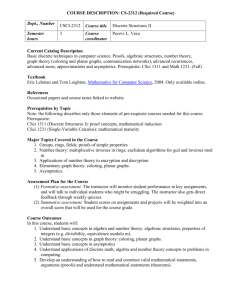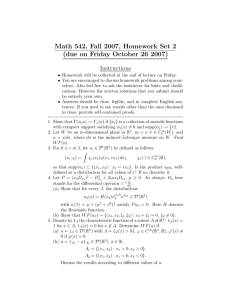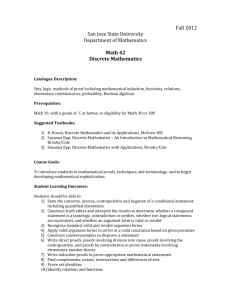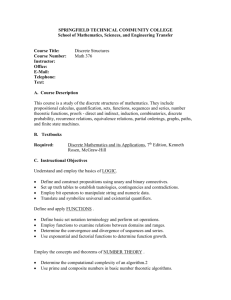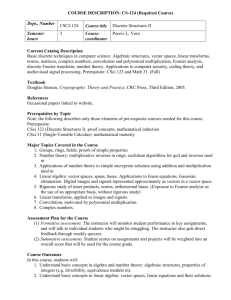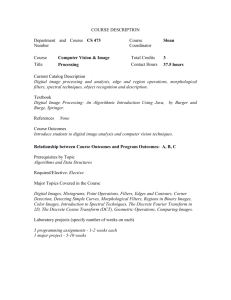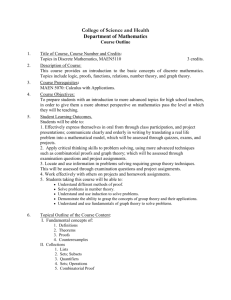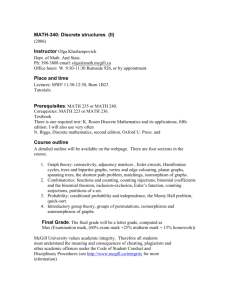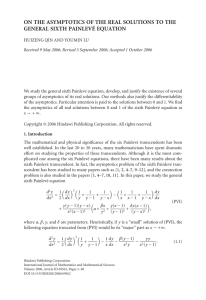CS 2312 Discrete Structures II Course Syllabus
advertisement
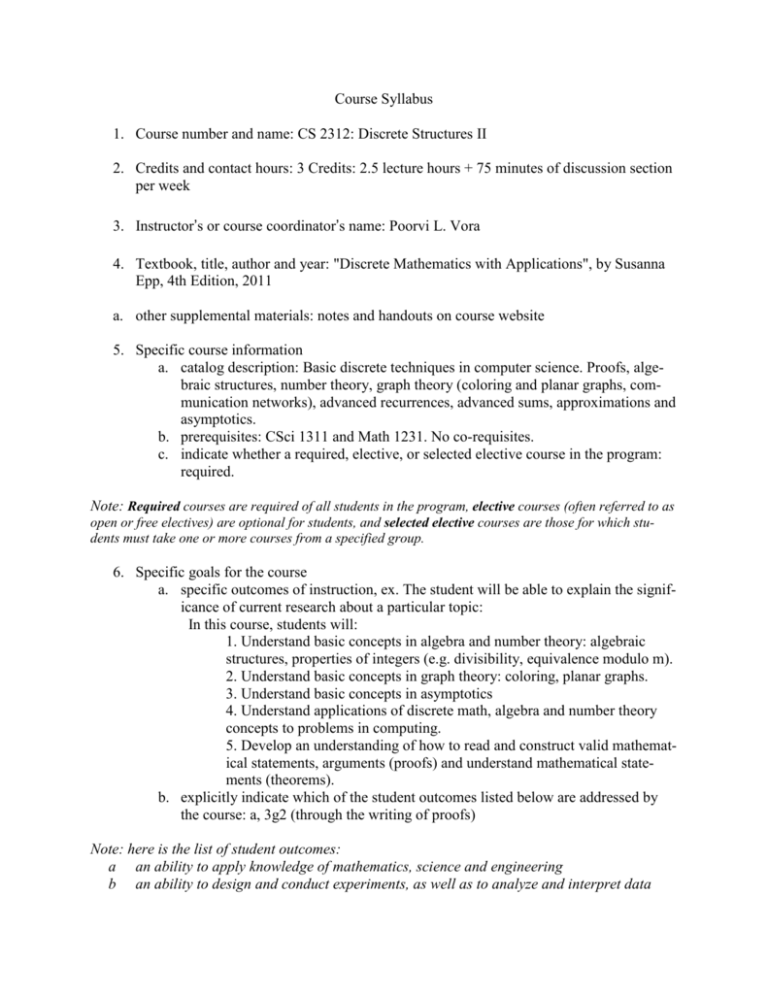
Course Syllabus 1. Course number and name: CS 2312: Discrete Structures II 2. Credits and contact hours: 3 Credits: 2.5 lecture hours + 75 minutes of discussion section per week 3. Instructor’s or course coordinator’s name: Poorvi L. Vora 4. Textbook, title, author and year: "Discrete Mathematics with Applications", by Susanna Epp, 4th Edition, 2011 a. other supplemental materials: notes and handouts on course website 5. Specific course information a. catalog description: Basic discrete techniques in computer science. Proofs, algebraic structures, number theory, graph theory (coloring and planar graphs, communication networks), advanced recurrences, advanced sums, approximations and asymptotics. b. prerequisites: CSci 1311 and Math 1231. No co-requisites. c. indicate whether a required, elective, or selected elective course in the program: required. Note: Required courses are required of all students in the program, elective courses (often referred to as open or free electives) are optional for students, and selected elective courses are those for which students must take one or more courses from a specified group. 6. Specific goals for the course a. specific outcomes of instruction, ex. The student will be able to explain the significance of current research about a particular topic: In this course, students will: 1. Understand basic concepts in algebra and number theory: algebraic structures, properties of integers (e.g. divisibility, equivalence modulo m). 2. Understand basic concepts in graph theory: coloring, planar graphs. 3. Understand basic concepts in asymptotics 4. Understand applications of discrete math, algebra and number theory concepts to problems in computing. 5. Develop an understanding of how to read and construct valid mathematical statements, arguments (proofs) and understand mathematical statements (theorems). b. explicitly indicate which of the student outcomes listed below are addressed by the course: a, 3g2 (through the writing of proofs) Note: here is the list of student outcomes: a an ability to apply knowledge of mathematics, science and engineering b an ability to design and conduct experiments, as well as to analyze and interpret data c an ability to design a system, component, or process to meet desired needs within realistic constraints such as economic, environmental, social, political, ethical, health and safety, manufacturability, and sustainability d an ability to function on multidisciplinary teams e an ability to identify, formulate, and solve engineering problems f an understanding of professional and ethical responsibility g an ability to communicate effectively (3g1 orally, 3g2 written) h the broad education necessary to understand the impact of engineering solutions in a global, economic, environmental, and societal context i a recognition of the need for, and an ability to engage in life-long learning j a knowledge of contemporary issues k an ability to use the techniques, skills, and modern engineering tools necessary for engineering practice. 7. Brief list of topics to be covered 1. Groups, rings, fields; proofs of simple properties 2. Number theory: multiplicative inverses in rings; euclidean algorithms for gcd and inverses mod m 3. Applications of number theory to encryption and decryption 4. Elementary graph theory: coloring, planar graphs. 5. Asymptotics.
